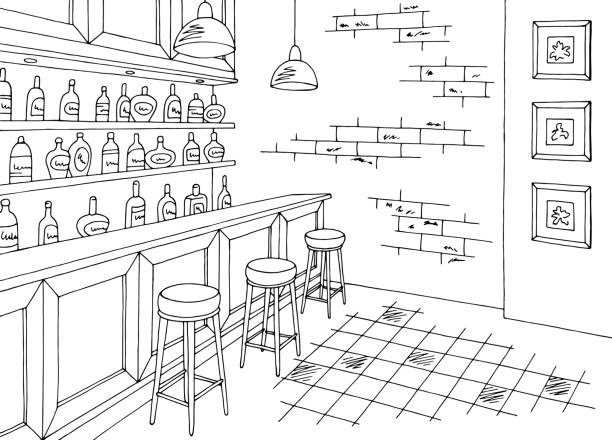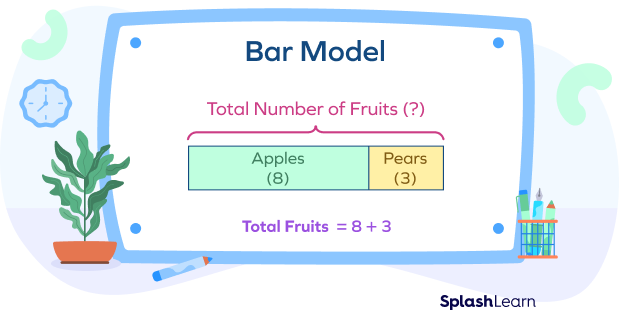Best classroom practices for implementing bar model drawing techniques
Wiki Article
Exploring Bar Design Illustration Techniques: A Comprehensive Overview to Envisioning Mathematics Concepts
Bar version drawing methods work as a valuable resource for both educators and pupils in envisioning mathematical ideas. These models streamline complicated numerical connections, assisting in the comprehension of addition, reduction, multiplication, and division. This overview details reliable approaches for executing bar versions, fostering active involvement and real-world links. As visitors explore the functional applications and training ideas, they will discover how these techniques can change their strategy to maths.Comprehending the Fundamentals of Bar Version Illustration
Bar model attracting acts as an effective visual device in maths, helping with the understanding of analytical methods and mathematical relationships. This strategy involves standing for numbers and their connections with rectangular bars, making it easier to visualize procedures such as enhancement, subtraction, multiplication, and division. Each bar's size represents a details value, allowing learners to compare quantities and understand proportions plainly.To develop a bar design, one starts by identifying the problem's essential elements, often damaging it down into parts that can be aesthetically represented. In a basic enhancement trouble, 2 bars can be drawn, with their lengths representing the addends. The combined length illustrates the amount. Additionally, bar versions can be adapted for a lot more complicated troubles, consisting of fractions and ratios, by changing the bars accordingly. Mastering these basics lays a solid foundation for efficient problem-solving and deeper mathematical comprehension.
Advantages of Utilizing Bar Versions in Mathematics
Utilizing bar designs in maths offers various advantages that improve understanding and understanding. These graphes help students in comprehending intricate concepts by breaking them down right into convenient elements. Bar designs provide a clear framework for showing relationships between numbers, making abstract concepts more concrete. They advertise a much deeper understanding of mathematical operations and help with analytic by allowing students to envision the information they are functioning with.Moreover, bar versions support the advancement of essential assuming abilities, as trainees should examine and interpret the visual information to attract conclusions. This approach motivates active involvement with the material, strengthening retention and mastery of mathematical concepts. By fostering a solid structure in aesthetic literacy, bar designs empower learners to come close to various mathematical obstacles with confidence. Overall, the assimilation of bar versions into mathematics education shows helpful in growing both understanding and logical abilities among trainees.
Applying Bar Versions to Enhancement and Subtraction
Bar versions offer as an effective device for visually standing for enhancement and reduction troubles. By showing the relationship in between numbers, they improve understanding and help with analytical. Furthermore, real-life applications of these versions can assist students comprehend mathematical concepts in sensible contexts.Standing For Addition Visually
When trainees experience addition and subtraction troubles, aesthetic help can significantly enhance their understanding of these operations. Bar models act as reliable tools for standing for addition. By dividing a rectangle right into segments that match to the numbers included, pupils can visualize the partnership between the quantities. If a trainee needs to include 3 and 5, they can develop a bar split into two areas: one area standing for 3 and the various other representing 5. This clear depiction not only simplifies the addition procedure yet also enhances the idea of combining quantities. As trainees manipulate these aesthetic aids, they create a much deeper understanding of addition, bring about improved analytical abilities and higher confidence in their mathematical capabilities.
Subtraction With Bar Versions
Reduction is commonly viewed as a more complicated operation than enhancement, bar models can effectively clarify this procedure for pupils. By visually representing the amounts included, students can much better comprehend just how numbers connect to one an additional. In a bar model for subtraction, one bar represents the total, while another suggests the quantity being deducted. This visual difference aids trainees comprehend the principle of "eliminating." If a bar reveals 10 devices, and an additional bar standing for 4 devices is eliminated, students can quickly see that 6 systems stay. This technique not just promotes understanding of subtraction but also aids in establishing problem-solving skills, allowing pupils to imagine their mathematical reasoning and enhance their total comprehension of mathematical principles.Real-Life Application Examples
Recognizing subtraction through bar models lays a structure for using these strategies in real-life situations. In different contexts, such as budgeting or purchasing, individuals can picture exactly how much money stays after costs. If an individual has $50 and spends $20, a bar model can stand for the overall amount and the spent part, highlighting that $30 is left. Furthermore, moms and dads can utilize bar versions to aid kids recognize the number of even more items require to be included in finish a set, such as having three apples and requiring 5. This aesthetic depiction simplifies complicated issues, assisting in comprehension and retention. Ultimately, bar models work as effective tools in everyday decision-making, boosting mathematical understanding in practical scenarios.Visualizing Multiplication and Department With Bar Models
In discovering the application of bar designs for reproduction and department, it is necessary to comprehend their foundational principles. Building reproduction versions enables students to picture relationships between numbers, while reliable department techniques can be illustrated through these visual help. This strategy boosts comprehension and analytical abilities in mathematics.Understanding Bar Versions
Bar designs work as a powerful visual device for illustrating the ideas of multiplication and division. They allow learners to stand for mathematical relationships in a structured style, facilitating a deeper understanding of these operations. In reproduction, bar designs display groups of equivalent dimension, permitting people to imagine the complete quantity when incorporating these groups. Alternatively, in department, bar versions help show exactly how a total is divided into smaller, equivalent components, clearing up the principle of partitioning. By using these aesthetic aids, pupils can comprehend the underlying concepts of multiplication and division better. This strategy not only enhances understanding yet likewise sustains analytical abilities, making bar models an invaluable possession in mathematical education.Building Reproduction Versions
Constructing reproduction models utilizing bar representations offers a clear method for imagining the procedure of multiplication. These models make it possible for students to stand for reproduction as teams of equivalent components, making abstract ideas extra concrete. For circumstances, to illustrate (3 times 4), a pupil can draw one bar separated into three equivalent segments, each representing 4 units. Furthermore, creating a second bar with the same size enhances the understanding of duplicated enhancement, as each sector matches to one group. This visual depiction not only help in comprehending multiplication however also boosts problem-solving abilities. By utilizing bar versions, pupils can much better understand partnerships between numbers and establish a durable structure for extra complex mathematical ideas, causing raised self-confidence in their capabilities.Picturing Department Approaches

Resolving Word Issues Utilizing Bar Model Techniques
In a trouble including addition and reduction, pupils can attract separate bars for each quantity and then manipulate them to locate the remedy. This procedure not only makes clear the trouble however likewise promotes a deeper conceptual understanding. Bar versions can be adjusted for various types of word troubles, making them functional across different mathematical topics. Inevitably, making use of bar designs can significantly improve trainees' problem-solving skills by giving a clear aesthetic path to arrive at the appropriate solution.
Integrating Bar Designs in Different Mathematics Topics
Bar designs can be effortlessly incorporated right into various mathematics topics, boosting students' understanding of principles beyond fundamental math. In algebra, these visual devices help in representing inequalities and equations, enabling learners to envision relationships in between variables. When tackling geometry, bar designs can highlight the buildings of shapes and spatial thinking, helping pupils comprehend concepts like location and perimeter effectively. In statistics, bar models assist in the interpretation of data sets, enabling pupils to compare quantities and acknowledge fads aesthetically. Additionally, integrating bar versions within measurement topics help in comprehending units and conversions by giving a tangible representation of quantities. By utilizing bar designs throughout various mathematical areas, teachers can promote a much deeper understanding of complex ideas, consequently improving analytical abilities and promoting vital reasoning (bar model drawing techniques). This flexibility demonstrates the energy of bar designs as a fundamental tool for students in their mathematical journeyTips for Training Bar Versions Effectively
Incorporating bar models into mentor practices requires thoughtful strategies to maximize their performance. Educators needs to begin by presenting bar designs with easy, relatable examples that pupils can easily realize. This aids to develop self-confidence and knowledge with the principle. Gradually enhancing the complexity of troubles permits students to apply their skills considerably. In addition, instructors must motivate students to create their very own bar designs, promoting energetic involvement and possession of their discovering.Integrating collaborative activities can additionally boost understanding, as trainees go over and fix issues in teams. Continual responses is crucial; instructors need to give useful commentary on students' bar model representations to direct renovation. Connecting bar models to real-life circumstances reinforces their importance, assisting pupils see the practical applications of their mathematical skills. By executing these techniques, educators can successfully harness the power of bar designs in their maths direction.
Often Asked Inquiries
Can Prevent Models Be Used in Various Other Topics Besides Math?
Bar models can indeed be used in various topics past math. They successfully show concepts in science, social studies, and language arts, assisting to aesthetically stand for connections, procedures, and concepts for boosted understanding across self-controls.What Age Is Best Suited for Discovering Bar Designs?
Bar designs are best suited for youngsters ages 7 to 12, as they establish concrete thinking skills during this duration (bar model drawing techniques). At this age, pupils can efficiently realize abstract ideas via aesthetic representation and analytical techniquesExist Digital Equipment for Creating Bar Designs?

How Can I Evaluate Pupil Recognizing of Bar Designs?
Reviewing pupil understanding of bar versions can involve quizzes, observational analyses, and seminar. Teachers might also assess pupils' completed versions and their capability to clarify their reasoning, ensuring an extensive analysis of understanding.What Are Typical Errors When Utilizing Bar Designs?
Common mistakes when using bar models include misstating quantities, falling short to precisely classify bars, confusing addition and reduction, ignoring to use constant ranges, and ignoring the significance of clear visual separation between different components.In enhancement, bar models can be adjusted for more complicated issues, including fractions and proportions, by readjusting the bars as necessary. Subtraction is commonly viewed as an extra complex procedure than enhancement, bar designs can properly clarify this process for pupils. In a bar design for subtraction, one bar represents the overall, while another indicates the quantity being subtracted. If a bar reveals 10 units, and one more bar standing for 4 units is gotten rid of, students can conveniently see that 6 systems stay. When splitting a total amount into equivalent groups, pupils can draw a long bar to stand for the whole read more and then segment it into smaller sized bars that indicate each group.
Report this wiki page